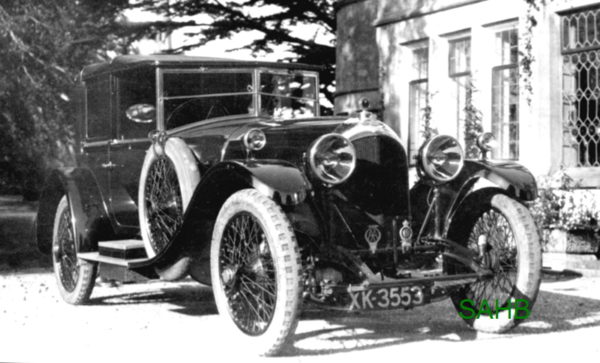
What makes this 3-litre of more than passing interest is its early date, coming as it does from the first full year of production, 1922. The car had Chassis No 14, Engine No 15, and its delivery date was January, which accords with the registration. Around a further 120 Bentleys were to follow it out of the firm’s Oxgate Lane works in Cricklewood, north-west London, during the course of the year.
The car’s coachwork is of the ‘All-Weather’ pattern that had been pioneered by Salmons of Newport Pagnell before WWI. Other makers were quick to take up the concept of what in simple terms was a fully enclosed body, but convertible to an open tourer. One such firm that did this was R Harrison & Son whose premises in Stanhope Street near Regent’s Park were only 5 miles from the Bentley factory via the Edgware and Marylebone Roads, the cars presumably being driven there in chassis form.
Harrison was never a high profile company, for instance it did not exhibit independently at the London Motor Shows. The firm was though listed as a maker of motorcar bodies as early as 1906, having been founded as coachbuilders in 1883. Through the ’twenties Harrison bodied a number of top of the range chassis of various makes as well as over 200 Bentleys, but the company went out of business in 1931.
The car seen here reminds us that a significant number of Bentleys of the 1920s carried enclosed coachwork –not all ‘vintage’ examples being the open sporting-bodied vehicles that many people these days perceive them to have been.
The owner of this car was William Sherbrook who obviously developed a liking for the make as he went on to own two more 3-litres in 1924, a saloon and a tourer; then in 1927 came a 6½-litre limousine, and the following year a 4½-litre short chassis sports-tourer. Had it been possible to own a single example from this list, opinions would inevitably vary as to which would have been chosen. That it is this very early 3-litre which has been selected for use here as a ‘Snapshot’ should be sufficient to indicate this writer’s choice.
A purely personal view is that the visual appeal of this Bentley lies not merely with the coachwork but is enhanced by the almost sculpted style of the mudguards and of course the radiator shape, whilst the fact that the car runs on beaded-edge wheels fitted with narrow tyres also contributes to its overall attractive presence.







Leave a Comment